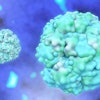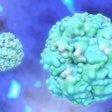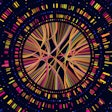
The Association for Molecular Pathology (AMP) has released initial best practice guidance for a trend in germline testing using exome slice or slice testing in diagnostics.
Slice testing emerged around 2021 as a strategy for sequencing a broad set of genes while limiting interpretation to a predetermined list (slice) of relevant genes, according to a joint report entitled "Slice Testing: Considerations from Ordering to Reporting" published online December 14 in the Journal of Molecular Diagnostics. Slice testing -- the practice of bioinformatically selecting a subset of genes -- is an alternative to traditional static gene panels or comprehensive exome sequencing (ES) and genome sequencing (GS).
"This approach allows significant streamlining of laboratory operations when multiple disease-focused analyses are offered and enables dynamic updating of genes analyzed by reducing the upfront analytical validation burden," wrote the authors, who are part of a standards workgroup and clinical practice committee. Another key advantage of slice testing is the ability to accommodate specific provider requests. An additional point made is that the new guidance applies to both exome sequencing and genome sequencing.
The AMP-convened workgroup included representatives of the College of American Pathologists and National Society of Genetic Counselors. Their 2021 laboratory practices survey probed into the use of whole exome sequencing slices, in silico exomes, and focused exomes. The workgroup concluded that most of the survey respondents were using manual, customized approaches that focused on bioinformatic methods for analysis.
Other clinical lab practices highlighted by the AMP survey:
- The majority of clinical labs were designing their own gene lists.
- Many labs provided an option for ordering physician-customized gene lists and/or used phenotype-driven gene lists by using human phenotype ontology terms.
- About half of survey respondents imposed bioinformatic filtering to restrict to genes of interest post-variant call file generation.
- To establish performance of slice testing, about 31% of labs used a methods-based approach, 7.7% validated the disease gene using reference materials for reported pathogenic variants, and 61.5% used a combined approach for validation.
The survey collected information from 66 respondents, primarily consisting of university hospitals and academic medical centers (63.6%), national and corporate laboratories (15.2%), regional and local independent laboratories (10.6%), and others, of which 83% were in the U.S.
Lead author of the related article Dr. Jeffrey SoRelle, of the Department of Pathology at the University of Texas Southwestern Medical Center, and colleagues offer guidance for clinical laboratories using or considering slice testing, as well as guidance for providers deciding between ordering a traditional gene panel, slice, or a comprehensive ES/GS assay.



















